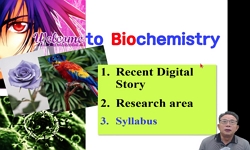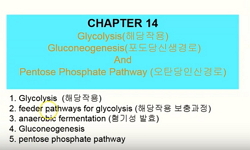This study investigated the effects of xylooligosaccharide on feces bifidobacteria proliferation, lactic acid concentration and lipid metabolism in healthy woman. Fourteen volunteers were randomly assigned to 2 groups : 1.4 g/day xylooligosaccharide i...
http://chineseinput.net/에서 pinyin(병음)방식으로 중국어를 변환할 수 있습니다.
변환된 중국어를 복사하여 사용하시면 됩니다.
- 中文 을 입력하시려면 zhongwen을 입력하시고 space를누르시면됩니다.
- 北京 을 입력하시려면 beijing을 입력하시고 space를 누르시면 됩니다.


자일로올리고당의 섭취가 변 내 비피더스 균수, Lactic Acid 농도와 지질대사에 미치는 영향 = Effects of Xylooligosaccharide Intake on Fecal Bifidobacteria, Lactic acid and Lipid Metabolism in Korean Young Women
한글로보기https://www.riss.kr/link?id=A82576570
- 저자
- 발행기관
- 학술지명
- 권호사항
-
발행연도
2007
-
작성언어
Korean
- 주제어
-
KDC
590
-
등재정보
KCI등재,SCOPUS
-
자료형태
학술저널
- 발행기관 URL
-
수록면
154-161(8쪽)
-
KCI 피인용횟수
1
- 제공처
- 소장기관
-
0
상세조회 -
0
다운로드
부가정보
다국어 초록 (Multilingual Abstract)
This study investigated the effects of xylooligosaccharide on feces bifidobacteria proliferation, lactic acid concentration and lipid metabolism in healthy woman. Fourteen volunteers were randomly assigned to 2 groups : 1.4 g/day xylooligosaccharide intake group, 2.8 g/day xylooligosaccharide intake group. The duration of the study was 28 days. The amount of feces and excretion time were not affected by xylooligosaccharide intake. The color of feces changed to yellow brown, and hardness of stool and effort to evacuation were reduced by xylooligosaccharide intake. Xylooligosaccharide intake reduced the fecal pH significantly after 14 days in 2.8 g/day intake group (p<0.05). The number of fecal bifidobacteria were significantly increased after 28 days in 1.4 g/day intake group (p<0.05), and in 2.8 g/day intake group, the number of fecal bifidobacteria significantly increased after 14 days (p<0.05). Water contents of feces were not affected by xyloolgosacchride intake. The fecal triglyceride and cholesterol concentrations were increased in 2.8 g/day intake group (p<0.05), and in 1.4 g/day intake group, fecal cholesterol concentration only was increased (p<0.05). The fecal lactic acid concentration was significantly increased in 2.8 g/day intake group (p<0.05). Serum trigly-ceride, cholesterol and glucose concentration were significantly decreased in 2.8 g/day intake group (p<0.05). In conclusion, xylooligosaccharide dietary supplementation may be beneficial to gastrointestinal health and lipid metabolism, and 2.8 g/day intake was more effective than 1.4 g/day intake. (Korean J Nutrition 40(2): 154~161, 2007)
목차 (Table of Contents)
- ABSTRACT
- 서론
- 연구방법
- 연구결과 및 고찰
- 요약 및 결론
- ABSTRACT
- 서론
- 연구방법
- 연구결과 및 고찰
- 요약 및 결론
- Literature cited
참고문헌 (Reference)
1 Christl SU, "ile acid metabolism by colonic bacteria in continuous culture: effects of starch and pH" (1) : 45-51, 1997
2 Shu CO, "Xylooligosaccharide and fructooligosaccharides affect the intestinal microbiota and precancerous colonic lesion development in rats" (6) : 1523-1528, 2004
3 Gibson GR, "Wang X. Regulatory effects of bifidobacteria on the growth of other colonic bacteria. J Appl Bacteriol 77" 412-420, 1994
4 Kim M, "The water soluble extract of chicory influences serum and liver lipid concentration cecal short chain fatty acid concentration and fecal lipid excretion in rats" (10) : 1731-1736, 1998
5 Fukushima M, "The effects of a probiotic on fecal and liver lipid classes in rats" (5) : 701-710, 1995
6 Goldin BR, "The effect of milk and lactobacillus feeding on human intestinal bacterial enzyme activity" 756-761, 1984
7 Bouhnik Y, "The capacity of nondigestible carbohydrates to stimulate fecal bifidobacteria in healthy humans: a double-blind, randomized, placebo-controlled, parallel-group, dose-response relation study" (6) : 1658-1664, 2004
8 Beattie ME, "Sterol structure determines miscibility versus melting transitions in lipid vesicles" (3) : 1760-1768, 2005
9 Boillot J, "Slama G. Effects of dietary propionate on hepatic glucose production carbohydrate and lipid metabolism in normal rats. Br J Nutr 73" 241-251, 1995
10 Pierre F, "Short-chain fructo-oligosaccharides reduce the occurrence of colon tumors and develop gut-associated lymphoid tissue in Min mice" (2) : 25-228, 1997
1 Christl SU, "ile acid metabolism by colonic bacteria in continuous culture: effects of starch and pH" (1) : 45-51, 1997
2 Shu CO, "Xylooligosaccharide and fructooligosaccharides affect the intestinal microbiota and precancerous colonic lesion development in rats" (6) : 1523-1528, 2004
3 Gibson GR, "Wang X. Regulatory effects of bifidobacteria on the growth of other colonic bacteria. J Appl Bacteriol 77" 412-420, 1994
4 Kim M, "The water soluble extract of chicory influences serum and liver lipid concentration cecal short chain fatty acid concentration and fecal lipid excretion in rats" (10) : 1731-1736, 1998
5 Fukushima M, "The effects of a probiotic on fecal and liver lipid classes in rats" (5) : 701-710, 1995
6 Goldin BR, "The effect of milk and lactobacillus feeding on human intestinal bacterial enzyme activity" 756-761, 1984
7 Bouhnik Y, "The capacity of nondigestible carbohydrates to stimulate fecal bifidobacteria in healthy humans: a double-blind, randomized, placebo-controlled, parallel-group, dose-response relation study" (6) : 1658-1664, 2004
8 Beattie ME, "Sterol structure determines miscibility versus melting transitions in lipid vesicles" (3) : 1760-1768, 2005
9 Boillot J, "Slama G. Effects of dietary propionate on hepatic glucose production carbohydrate and lipid metabolism in normal rats. Br J Nutr 73" 241-251, 1995
10 Pierre F, "Short-chain fructo-oligosaccharides reduce the occurrence of colon tumors and develop gut-associated lymphoid tissue in Min mice" (2) : 25-228, 1997
11 Gibson GR, "Selective stimulation of bifidobacteria in the human colon by oligofructose and inulin" (4) : 975-982, 1995
12 Campbell JM, "Selected indigestible oligosaccharides affect large bowel mass, cecal and fecal shortchain fatty acid, pH and microflora in rats" (1) : 130-136, 1997
13 Levrat MA, "Role of dietary propionic acid and bile acid excretion in the hypocholesterolemic effects of oligosaccharides in rats" (4) : 531-538, 1994
14 Blay GL, "Prolonged intake of fructo-oligosaccharides induces a short-term elevation of lactic acid-producing bacteria and a persistent increase in cecal butyrate in rats" (12) : 2231-2235, 1999
15 Lee OS, "Production of xylooligosaccharides with thermostable xylanases from the Streptomyces thermocyaneoviolaceus" (4) : 221-226, 2001
16 Agheli N, "Plasma lipids and fatty acid synthase activity are regulated by short-chain fructo-oligosaccharides in sucrose-fed insulin-resistant rats" (8) : 1283-1288, 1998
17 Kleessen B, "Oligofructose and long-chain inulin: influence on the gut microbial ecology of rats associated with a human fecal flora" (2) : 291-300, 2001
18 Lee MR, "Improving effects of fructooligosac charide and isomaltooligosaccharide contains in sponge cake on the constipation of female college students" (4) : 621-626, 2003
19 Swanson KS, "Fructooligosaccharides and Lactobacillus acidophilus modify bowel function and protein catabolites excreted by healthy humans" (10) : 3042-3050, 2002
20 Kleessen B, "Feeding resistant starch affects fecal and cecal microflora and short-chain fatty acid in rat" 2453-2462, 1997
21 Rehw BK, "Effects of xylooligosaccharides on the growth of intestinal microflora" (4) : 380-387, 2002
22 Okazaki M, "Effects of xylooligosaccharide on growth of bifidobacteria" 43 (43): 395-401, 1990
23 Bang MH, "Effects of soyoligosaccharide intake on fecal bifidobacteria and lipid concentration in Korean young women" (8) : 662-668, 2004
24 Ku EJ, "Effects of soyoligosaccharide intake on fecal Bifidibacterium and plasma lipids levels in Korean College Women" Ewha Womon’s University Thesis 2001
25 Delzenne NM, "Effects of fructans-type prebiotics on lipid metabolism" (7) : 456S-458S, 2001
26 Kim SO, "Effects of dietary xylooligosaccharide on lipid levels of serum in rats fed high cholesterol diet" (5) : 945-951, 1998
27 Kim SO, "Effects of dietary xylooligosaccharide on hepatic UDP-glucuronyl transferase activity and compositions of fecal sterols in rat high cholesterol diet" (6) : 1197-1203, 2001
28 Robinson RR, "Effects of dietary arabinogalactan on gastrointestinal and blood parameters in healthy human subjects" (4) : 279-285, 2001
29 Sung HY, "Effects of chicory inulin and oligosaccharides on lipid metabolism in rats fed a high-cholesterol diet" (2) : 305-310, 2004
30 Koon YS, "Effects of bifidobacteria and oligosaccharide on the quality attributes of frozen soy yogurts" 18 (18): 43-50, 2002
31 Alles MS, "Effect of transoligosaccharides on the composition of the human intestinal microflora and on putative risk markers for colon cancer" 980-991, 1999
32 Fiordaliso M, "Dietary oligofructose lowers triglycerides, phospholipids and cholesterol in serum and very low density lipoproteins of rats" 163-167, 1995
33 Gibson GR, "Dietary modulation of the human gut microflora using the probiotics oligofructose and inulin" (7) : 1438S-1441S, 1999
34 Gibson GR, "Dietary modulation of the human colonic microbiota: Introducing the concept of prebiotics" 1401-1412, 1995
35 Gibson GR, "Dietary modulation of the human colonic microbiota introducing the concept of prebiotics" (6) : 1404-1412, 1995
36 Trautwein EA, "Dietary inulin lowers plasma cholesterol and triacylglycerol and alters biliary bile acid profiles in hamsters" 1937-1943, 1998
37 Ten Bruqqencate SJ, "Dietary fructooligosaccharide affect intestinal barrier function in healthy men" 70-74, 2006
38 Luo J, "Chronic consumption of short-chain fructooligosaccharide by healthy subjects decreased basal hepatic glucose production but had no effect on insulin-stimulated glucose metabolism" (6) : 939-945, 1996
39 Delzenne NM, "Biochemical basis of oligofructoseinduced hypolipidemia in animal models" 1467-1470, 1999
40 Aprikian O, "Apple pectin and a polyphenolrich apple concentrate are more effective together than separately on cecal fermentation and plasma lipids in rats" (6) : 1860-1885, 2003
41 Frings CS, "A colorimetric method for determination of total serum lipids based on the sulfphosphovanillin reaction" 1970
동일학술지(권/호) 다른 논문
-
대두 함유 방사선 조사식이를 섭취한 Mouse의 산화적 스트레스
- 韓國營養學會
- 박선영(Park Sun Young)
- 2007
- KCI등재,SCOPUS
-
남극 세종과학기지 대원들의 메뉴분석에 의한 식사의 질 평가
- 韓國營養學會
- 최지현(Choi Jihyun)
- 2007
- KCI등재,SCOPUS
-
식이에 첨가한 Conjugated Linoleic Acid (CLA)가 만성적으로 알코올을 섭취한 쥐에서 간조직의 항산화 체계에 미치는 영향
- 韓國營養學會
- 김세나(Kim Se-Na)
- 2007
- KCI등재,SCOPUS
-
참치지느러미 추출물에 의한 암세포 독성 및 Quinone Reductase 활성 증가 효과
- 韓國營養學會
- 신미옥(Shin Mi-Ok)
- 2007
- KCI등재,SCOPUS
분석정보
인용정보 인용지수 설명보기
학술지 이력
| 연월일 | 이력구분 | 이력상세 | 등재구분 |
|---|---|---|---|
| 2023 | 평가예정 | 해외DB학술지평가 신청대상 (해외등재 학술지 평가) | |
| 2020-01-01 | 평가 | 등재학술지 유지 (해외등재 학술지 평가) |  |
| 2013-07-24 | 학술지명변경 | 한글명 : 한국영양학회지 -> Journal of Nutrition and Health외국어명 : The Korean Journal of Nutrition -> Journal of Nutrition and Health |  |
| 2010-01-01 | 평가 | 등재학술지 유지 (등재유지) |  |
| 2008-01-01 | 평가 | 등재학술지 유지 (등재유지) |  |
| 2006-01-01 | 평가 | 등재학술지 유지 (등재유지) |  |
| 2001-01-01 | 평가 | 등재학술지 선정 (등재후보2차) |  |
| 1998-07-01 | 평가 | 등재후보학술지 선정 (신규평가) |  |
학술지 인용정보
| 기준연도 | WOS-KCI 통합IF(2년) | KCIF(2년) | KCIF(3년) |
|---|---|---|---|
| 2016 | 0.86 | 0.86 | 1.03 |
| KCIF(4년) | KCIF(5년) | 중심성지수(3년) | 즉시성지수 |
| 1.18 | 1.11 | 1.778 | 0.12 |




 ScienceON
ScienceON DBpia
DBpia





